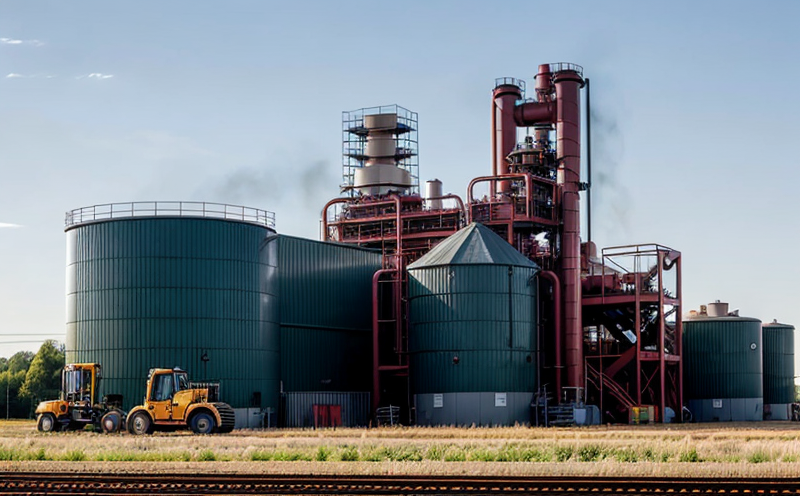ISO 9614-2 Conveyor System Noise Level Testing
The ISO 9614-2 standard provides a method to determine the sound power level of machinery, including conveyor systems. This service is particularly relevant for quality managers and compliance officers who need accurate noise levels to ensure regulatory compliance and product safety.
Conveyor systems are essential components in various industrial sectors like manufacturing, warehousing, and logistics. Noise generated by these systems can affect the work environment, productivity, and even employee health if not managed properly. The ISO 9614-2 method is widely recognized as a reliable approach to measure sound power levels, which helps in assessing noise pollution and implementing appropriate mitigation strategies.
The testing process involves several key steps: preparation of the conveyor system for measurement, placement of the test setup, calibration of the instruments used, and finally, the actual measurement. The ISO 9614-2 method ensures that all measurements are taken under controlled conditions to provide accurate results. This is crucial for industries where noise control is a critical factor in maintaining safe working environments.
Our laboratory uses advanced acoustic testing equipment compliant with international standards such as ISO and ASTM, ensuring precise and reliable measurement of sound power levels. The setup includes an anechoic chamber or similar enclosed space to minimize background noise interference, which is essential for obtaining accurate readings.
The results from this testing are critical for several reasons. Firstly, they help in understanding the baseline noise level generated by conveyor systems, which can then be used as a reference point for future improvements. Secondly, these measurements guide the design and operation of quieter machinery, contributing to better working conditions. Lastly, compliance with regulatory requirements is ensured, avoiding potential legal issues and fines.
To ensure accurate testing, it's important to follow specific procedures outlined in ISO 9614-2. These include determining the type of conveyor system being tested, selecting appropriate measuring points, ensuring proper calibration of all equipment, and conducting tests under defined conditions such as ambient temperature and humidity levels. The data collected during these tests is then used to calculate the sound power level according to the standard's formula.
Our team of experts ensures that each step of the testing process adheres strictly to ISO 9614-2 guidelines, providing clients with confidence in the reliability of our results. By leveraging advanced technology and expertise, we offer a comprehensive service package tailored to meet specific client needs within this challenging but crucial aspect of industrial machinery.
Benefits
- Compliance with international standards (ISO 9614-2)
- Accurate measurement of sound power levels
- Precise assessment of noise pollution from conveyor systems
- Guidance for designing quieter machinery
- Informed decision-making regarding equipment operation and maintenance
- Avoidance of potential legal issues related to noise regulations
- Enhanced working conditions in industrial environments
- Support for sustainability initiatives aimed at reducing environmental impact
Eurolab Advantages
Our laboratory offers a range of advantages that make ISO 9614-2 conveyor system noise level testing an optimal choice:
- Expertise and Experience: Our team comprises highly skilled professionals with extensive experience in acoustics, vibration, and noise testing.
- State-of-the-Art Equipment: We utilize cutting-edge acoustic measurement instruments that adhere strictly to international standards like ISO 9614-2.
- Comprehensive Support: From initial consultation to final report delivery, our service encompasses all necessary stages ensuring full client satisfaction.
- Timely Delivery: We understand the importance of timely results and strive to deliver accurate test outcomes within agreed-upon deadlines.
- Prompt Reporting: Our reports are detailed yet concise, providing actionable insights based on the collected data.
- Confidentiality: All information shared with us remains strictly confidential and is protected under strict security protocols.
These advantages ensure that our clients receive not only reliable test results but also valuable recommendations for improving their industrial processes. This comprehensive approach sets Eurolab apart in the field of acoustics, vibration, and noise testing.
Use Cases and Application Examples
| Scenario | Description | Outcome |
|---|---|---|
| Initial Compliance Testing | Determining the sound power levels of newly installed conveyor systems to ensure they meet local noise regulations. | Achieving compliance with regulatory requirements and setting a benchmark for future performance. |
| Ongoing Monitoring | Regular measurement of existing conveyor systems to track changes in noise levels over time or after maintenance. | Identifying trends and addressing any issues promptly to maintain optimal working conditions. |
| Design Verification | Testing prototypes before finalizing designs to verify that they meet specified noise reduction targets. | Ensuring product quality meets both internal specifications and external standards. |
| Maintenance Planning | Evaluating the effectiveness of implemented maintenance practices on reducing conveyor system noise. | Optimizing maintenance schedules to extend equipment life while minimizing noise pollution. |





